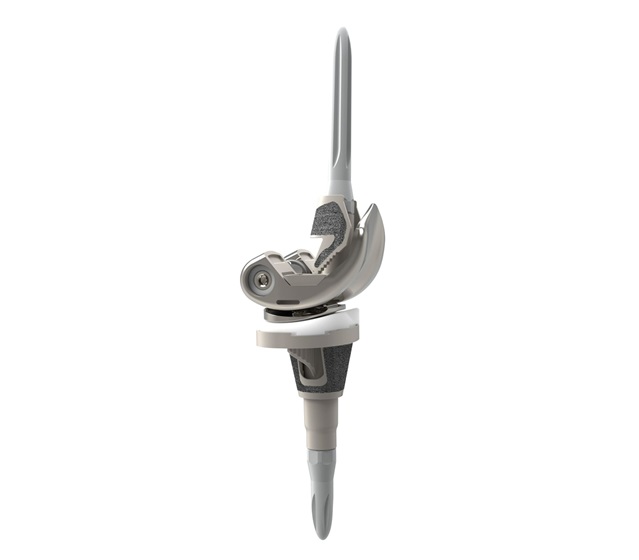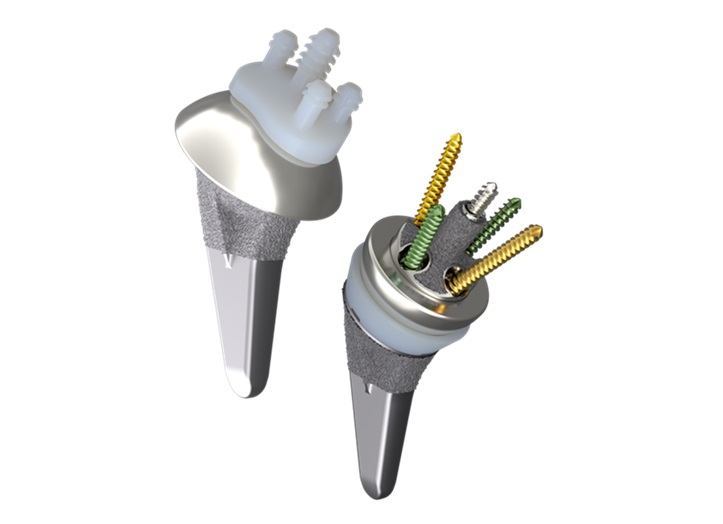SAN FRANCISCO, Feb. 12, 2024 /PRNewswire/ — As the use of robotic assistance in total knee arthroplasty (TKA) has grown, there has been limited research looking at whether it improved the risk of revision. New data showed that revision rates were similar in conventional and robotic-assisted cementless TKA at two years post-operatively. Presented at the 2024 Annual Meeting of the American Academy of Orthopaedic Surgeons (AAOS), the study, “Effect of Robotic Assistance on Early Revisions and Aseptic Loosening in Cementless Total Knee Arthroplasty: An Analysis of the American Joint Replacement Registry,” also found that the odds of revision due to infection or mechanical loosening were not significantly different between the two methods.
In 2017, more than 754,000 TKAs were performed in the United States. Bone cement is typically used to fix the implant to the bone; however, cementless TKA has gained popularity as younger and more active patients undergo the procedure showing reduced surgery time and the potential to avoid cement fixation failure in the future.[i] The use of robotic-assisted TKA has increased due to the potential for more precise, even bone cuts and a more accurate match with the implant dimensions.[ii],[iii]
“A lot of single surgeon studies show there is improved precision with robotic-assisted TKA,” said Lucas E. Nikkel, MD, FAAOS, assistant professor of orthopaedic surgery, Johns Hopkins Medicine. “Some studies suggest there may be improved early recovery or less damage to soft tissue. One of the challenges with evaluating this is that many previous studies had significant financial conflicts of interest with the authors. We wanted to evaluate these questions using a registry study to eliminate the potential confounding factors to understand if there is a difference when this technology is applied to a surgery.”
Using the American Joint Replacement Registry (AJRR), the researchers compared patients who underwent cementless TKA with robotic assistance versus without from January 2017 to March 2020, which included a minimum two-year follow up. Data from patients aged 65 years and older was used due to the data linkage between AJRR and inpatient/outpatient Medicare claims data, which allowed the researchers to track patients if they switched hospitals. The primary and secondary outcomes were two-year all-cause odds of revision between cementless TKA with or without robotic assistance and two-year odds of the specific indication for revision surgery.
A total of 9,220 cementless TKAs were identified, with 4,120 (45%) performed with robotic assistance. Using a multivariable, mixed-effects logistic regression model, the findings, after controlling for cofounders, included:
- The odds of all-cause revision at two years following surgery were similar between the conventional and robotic-assisted cohorts (odds ratio 0.8, 95% CI .05 to 1.3; p=0.4).
- The odds of revision due to infection were similar between the two groups (OR 1.47 95% CI 0.8 to 2.6; p=0.19).
- Mechanical loosing was not significantly different between the cohorts (OR 3.2, 95% CI 0.8-12; p=0.09
“Utilizing patients over age 65, we expected them to have higher failure rates as the potential for biologic fixation may be slightly lower,” said Dr. Nikkel. “We found there was no significant differences in the risk of needing another operation within the first two years after surgery with a robotic-assisted or manual technique. This is significant in this population as the likelihood of an early failure is pretty much the same whether robotic assistance is used or not. Some patients desire a robotic-assisted TKA because they’ve heard it is better, but we’ve shown that there isn’t a true benefit in terms of the likelihood of needing another surgery in the early period.”
The researchers noted there were several limitations of the study, including the fact that national registries are reliant on the accuracy of data submitted, with 60% of AJRR TKAs not reporting if robotic assistance was used or not, and younger patients were excluded from this study.
# # #
2024 AAOS Annual Meeting Disclosure Statement
About the AAOS
With more than 39,000 members, the American Academy of Orthopaedic Surgeons is the world’s largest medical association of musculoskeletal specialists. The AAOS is the trusted leader in advancing musculoskeletal health. It provides the highest quality, most comprehensive education to help orthopaedic surgeons and allied health professionals at every career level to best treat patients in their daily practices. The AAOS is the source for information on bone and joint conditions, treatments and related musculoskeletal healthcare issues; and it leads the healthcare discussion on advancing quality.
Follow the AAOS on Facebook, X, LinkedIn and Instagram.
| ____________________ |
| i Asokan A, Plastow R, Kayani B, Radhakrishnan GT, Magan AA, Haddad FS. Cementless knee arthroplasty: a review of recent performance. Bone Jt Open. 2021 Jan 22;2(1):48-57. |
| ii Song E, Seon J, Yim J, Netravali NA, Bargar WL. Robotic-assisted TKA reduces postoperative alignment outliers and improves gap balance compared to conventional TKA. Clin Orthop Relat Res. 2013;471(1):118-126. |
| iii Koenig JA, Suero EM, Plaskos C. Surgical accuracy and efficiency of computer-navigated TKA with a robotic cutting guide–report on the first 100 cases. Orthopaedic Proceedings. 2012;94:103. |
SOURCE American Academy of Orthopaedic Surgeons






